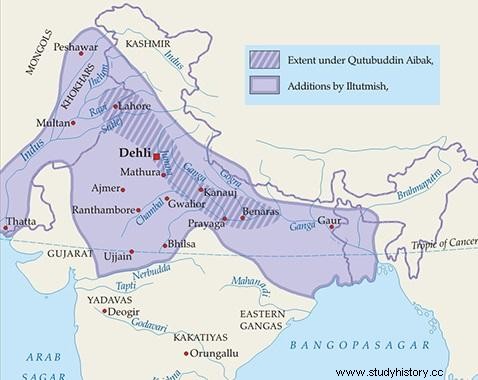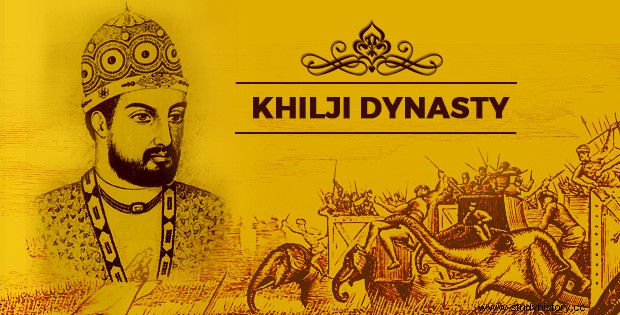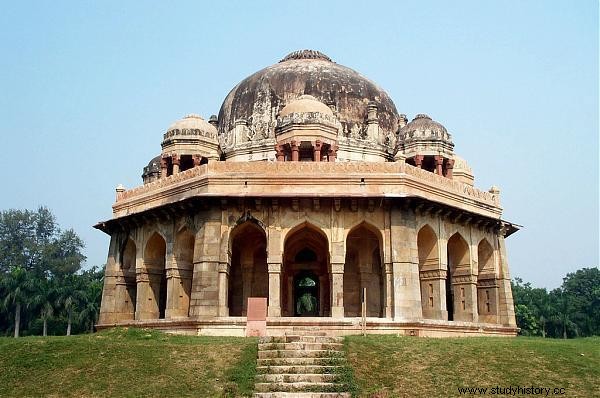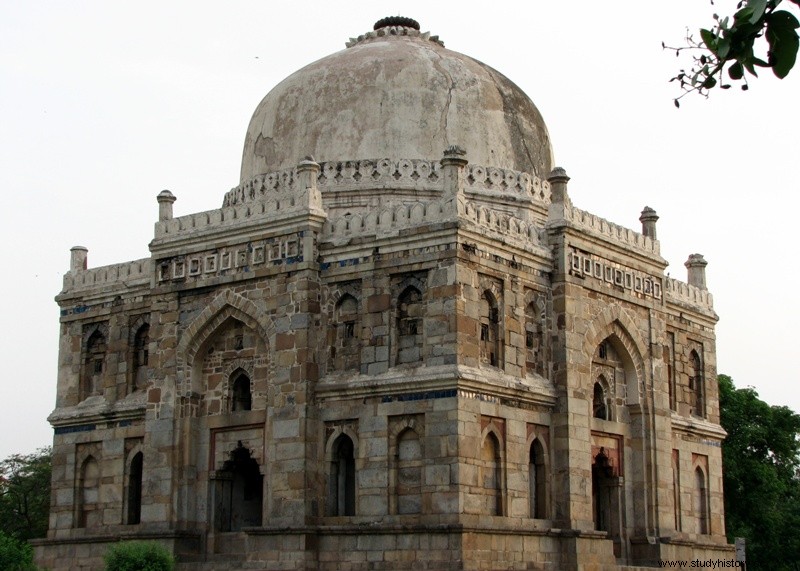India is a country with a rich heritage and an even richer history of fellow human beings of the world. The country has witnessed some of the most glorious and popular dynasties and empires that ruled the Indian subcontinent for years. The reign of these dynasties saw many heroic battles and rulers make their mark in the name of history. Let's look at some of the rulers and kingdoms under the Delhi Sultanate that ruled India.

Sultanate of Delhi
Delhi Sultnate is a term given to five kingdoms that ruled Delhi between the 13th and 16th centuries. There were five different dynasties that ruled during this period. The Sultanate was initiated by Muhammad Ghori and was succeeded by the Mughal Empire. The dynasties and their reign:
- Mamluk Dynasty (1206-1290)
- Khilji Dynasty (1290-1320)
- Tughlaq Dynasty (1320-1413)
- Sayyid Dynasty (1414-1451)
- Lodi Dynasty (1451-1526)

Rise of Delhi Sultanate
During 1000-1200 AD. Many changes took place in Central and West Asia. The Gujarat-Pratihara empire collapsed and caused instability in northern India. The Turks formed a new state in the north-west, and there were constant conflicts between the Khawarizmi rulers in Iran and the Ghurid rulers in Afghanistan. This forced the Ghurid rulers to expand their rule in India. Two important battles took place at that time between Ghurid Muizzuddin Muhammad and Prithviraj Chauhan:the Battle of Tarain in 1191 and the Battle of Tarain in 1192.
Muizzuddin Muhammad also fought a war with Jaichandra of the Gahadavala Empire in 1194 and defeated him. This allowed the Ghurid rulers to move on towards Benaras and Bihar. Muizzuddin Muhammad then moved back to Central Asia to fight the ruling Khawarizmi rulers, where he was defeated. The defeat caused the Ghurids to concentrate their efforts in India. Muizzuddin succeeded in suppressing local rulers by 1206.

The Mamluk or Slave Dynasty (ca. 1200-1526)
'Mamluk' refers to a soldier of slave origin converted to Islam. The dynasty under the Delhi Sultanate began in the 9th century AD. and gradually the Mamluks became a powerful military caste in various Muslim communities. The concept of equality in Islam and Muslim traditions in South Asia served its peak when slaves were elevated to sultanate. The slave dynasty of the dynasties and kingdoms that ruled the Indian subcontinent for around 84 years and the rulers Qutbuddin Aibak, Shams-ud-din Iltutmush and Ghiyas-ud-din Balban, the great sultans of the time, were all slaves in the first place. The slave dynasty remained the first Muslim dynasty to rule India.
Muhammad Ghori
Muhammad Ghori had no sons and raised thousands of slaves as royal children and educated them. During his tenure, slaves held all key positions in government. Qutb-ud-din Aibak, Taj-ud-din Ildiz and Nasir-ud-din Qubachah were favorite slaves of the sultan and were appointed governors of Delhi, Ghazni and Lahore respectively. After Ghori's death in 1206, Qutbuddin Aibak was elected the new sultan
Qutbuddin Aibak
He was the first South Asian native to rule over South Asia and became known as the "Lakh Baksh Sultan" for his generosity. The ruler started the construction of the popular Qutub Minar in Delhi, a tower built as a symbol of Islamic faith and victory over Rajput. He built security towers, checkpoints, tax posts and forts in the most important cities of his empire. Qutbuddin Aibak died in 1210 of injuries sustained while falling from a horse in a game of Chaugan (polo). His reign lasted only 4 years and was succeeded by his son Aram Shah, who proved incompetent.

Iltutmish
The Turkish nobles invited Iltutmish, a popular slave and son-in-law to Aibak, to take over state affairs. Iltutmish was governor of Badaun when he deposed Qutub-ud-din successor, Aram Shah, and ascended to power in 1211. He ruled for about 26 years, from 1211 to 1236, bringing much-needed stability to the empire. Iltutmish died in 1236 and his death was followed by a war of succession started between his children who proved to be weak rulers.
Raziya Sultana
Raziya Sultana of the Delhi Sultanate ruled between 1236 and 1239 and managed to manipulate rebel factions to oppose each other. Bahram, another son of Iltutmish, however, took over from Raziya Sultana in 1239 and declared himself king, with the support of forty rulers. Although Raziya tried to take over the throne with the help of her husband Altunia, she was unfortunately defeated and killed in a bandit fight.
Bahram
During Bahram's two years as king, the chiefs who originally supported him became disorganized and constantly fought with each other. He was assassinated by his own army.
Masud
Masud, son of Rukn-ud-din Firuz, took over as sultan from 1242 to 1245. After that, he was replaced by the youngest son of Iltutmush, Nasir-ud-din Mahmud, in 1245. Mahmud ruled the Indian subcontinent for about 20 years. . During his tenure, however, the main power remains solely in the hands of Balban.
Ghiyas-ud-din Balban
When Mahmud died, Ghiyas-ud-din Balban took over the throne of Delhi Sultnate, ruled from 1266-1287 and consolidated the administrative establishment of the vast empire. Balban was captured by the Mongols when he was a child. They sold him in Baghdad, and he was later taken to Delhi, where Iltutmush bought him. He appeared as one of Chalgan. Balban organized the court according to the pattern of the courts of Iranian kings and established a department for intelligence. He spread his spies to gather information about all the political developments and conspiracies in the state.
Balban also administered impartial justice to win the trust of the people, and as sultan of the Delhi Sultanate, he adopted a blood and iron policy in his government. He was aware that Chalgan did not like his growing power. After becoming the sultan, Balban decided to kill them. He had some of them murdered and others exiled. Under Nasir-ud-din's rule, the Mongols soared into much and plundered Lahore. To control this, Balban had new forts built and also started the repair of the old towers. He sent his best troops to the north end to check on the Mongols. The troops managed to control and prevent the Mongolian threat. The biggest setback for him, however, was the death of his most favored son, Prince Muhammad, during the war with the Mongols. Balban died in 1287.

Khilji Dynasty (1290-1320 AD)
The Khiljis, sometimes mistakenly thought to be Afghans from the Delhi Sultanate, were in fact Turks who settled in the Afghanistan region. They were called Khalj and adopted the Afghan lifestyle. The Ghaznavid-Ghurid invasions with increasing Mongolian pressure from Central Asia brought the Khiljis to Hindustan. Jalal-ud-din Khilji (1290-1296 AD) was the first Khilji ruler and founder of the dynasty and was succeeded by Ala-ud-din Khilji (1296-1316 AD). The latter introduced several economic and political reforms. His successors, Shihab-ud-din Umar, Mubarak and Khusro Khan ruled until the period 1320 AD
Jalal-ud-din Khilji
He was the founder of the Khilji dynasty and believed that India could not be a supreme or truly Islamic state when it was dominated by Hindus. Jlal-ud-din-Khilji allowed Turkish nobles to retain their positions and led a failed expedition against Ranthambore.
Ala-ud-din Khilji
He was the second ruler of the ruling Khilji dynasty during the Sultanate of Delhi and the nephew and son-in-law of Jalal-ud-din. He is recognized as the most powerful ruler of the Khilji dynasty and ruled from 1296 to 1316. Ala-ud-din Khilji is credited with bringing agricultural reforms, market reforms and price control and conquering Gujarat, Ranathambor, Mewar, Malwa, Jalore, Warangal, Mabar and Madurai. He also ordered the conquest of Ranthambore in 1299. Hammir Dev Chauhan's army repulsed the attack and killed Nusrat Khan, while Ulugh Khan escaped and reached Delhi. In 1301 he himself led the attack on Ranthambore, and it led to a long siege. Hammir was well prepared for the attack and the fort did not fall after repeated skirmishes. Khilji resorted to diplomacy.
Ala-ud-din then led an expedition to southern India. It is said that he is the first Muslim king to go south to expand his territory. Alauddin Khilji is popular for defeating the Mongols in the battles of Jalandhar (1298), Kili (1299), Amroha (1305) and Ravi (1306). Then he made a slave named Malik Kafur, the army commander. Alauddin died in January 1316 in Edema.
Khiljis fall
The last days of Ala-ud-din Khilji were plagued by problems and accidents. Qutb-ud-din Mubarak Shah, the successor of Ala-ud-din Khilji, came to the throne in 1316 AD. After that, Khusro Khan killed Qutb-ud-din in 1320 AD. while Khusro Khan was killed by Frontier Province Governor Ghazi Tughlaq. in 1320 AD. He then took over the title of Ghiyas-ud-din Tughlaq and emerged as the founder of the Tughlaq dynasty.

Tughlaq Dynasty
The Tuglacs in Delhi Sultante were of Turkish origin. The Tughlaq dynasty was founded by Ghiyas-al-din Tughlaq in 1321 AD. The empire grew enormously under his son Muhammad bin Tughlaq (1325-1351 AD). The notable events under his rule include the transfer of capital from Delhi to Daulatabad, a move that failed and was also responsible for extending the Delhi sultanate south to the Deccan region.
Muhammad bin Tughlaq introduced a copper-based token currency. Another failed experiment that could have been a turning point in history. He was succeeded by Firoz Shah Tughlaq (1351-1388 AD) who rebuilt the top two floors of the famous white marble Qutub Minar. The Tughlaq dynasty was an important dynasty in the Sultanate of Delhi and was the first dynasty of Turkish origin in India. Some of the important rulers of the Tuglaq dynasty are:
Ghiyas ud din Tughlaq:The Founder of the Tuglaq Dynasty
His real name was Ghazi Malik and was a slave to Ghiyas out your Balban from Turkey. He established the Tughlaq dynasty in 1320 AD. Ghiyas ud din Tughlaq built Tughlaqabad, the third city of Delhi, and was killed by his own son.
Muhammad bin Tughlaq
He introduced the 'famine code' to provide relief to famine-affected regions. Muhammad bin Tughlaq was well versed in various fields of learning, such as astronomy, mathematics and medicine. He formed the agricultural division (Diwani-Amirkohi) and became popular as "Misture of Opposition" or especially mad king ". Tughlaq encouraged revenue or doab to half of the total products and transferred the capital from Delhi to Devagiri in 1326-27. He also introduced currencies in copper and brass during 1329-30 and was popular as a 'prince of money'.
Muhammad was the first sultan under the Delhi Sultan to grant loans known as sondhar to the peasants of the empire to dig wells and improve cultivation. He maintained cordial relations with many Asian countries, especially China. Toghan Timur, the Chinese emperor sent as an envoy to the capital Delhi in 1341, sought permission from Muhammad to rebuild Buddhist temples throughout the Himalayan region. These temples were later demolished by Muhammad's soldiers during the Qarajal expedition.
The sultan then sent Ibn Battuta as an envoy to China's Mongol imperial court. Ibn Batuta started the journey in July 1342, and returned to India in 1347. Muhammad faced several revolts during his region, and almost the entire South India region became independent during his reign.
Firuz shah Tughlaq
He was born in 1309 and took power in 1357. Firuz Shah ruled for thirty-seven years (1357-88), and was popular as a skilled military leader focusing on the economic development of the empire. He allocated state resources to public welfare activities and led a campaign against the Jajnagar ruler and two campaigns in Bengal. He introduced the principle that when a nobleman passed away, his son would immediately succeed him. This principle was also applied to the army. He replaced 24 types of taxes with 4 types of taxes and abolished all forms of inhuman punishments such as cutting off the fingers for minor offenses.
Firuz Shah also opened a charity hospital and dug and repaired many canals for irrigation purposes. He also built many new cities, some of which still exist, such as Hissar (now in Haryana) and Firuzabad (now in Uttar Pradesh). Firuz Shah Tughlaq died in 1388 and was the last of the great rulers of the Tughlaq dynasty. The decline of the empire began after his death.

Sayyid Dynasty (1414 AD to 1451 AD)
The Sayyids came to power after Timur's looting of Delhi in 1398 AD. The Sayyids were succeeded by Lodis.

Lodi Dynasty (1451 AD to 1526 AD)
The Lodis were descendants of Afghan origin and the Lodi dynasty was founded by ruler Bahlul Khan Lodi in 1451 AD. Sikandar Lodi (1489 AD-1517) founded the city of Agra in 1504. Ibrahim Lodi (1489 AD-1526) was the last ruler of the Lodi dynasty. He was defeated by Babur in the first battle of Panipat, and the Mughal regime was established in India.

India's history has a long line of rulers under the Delhi Sultanate who ruled the Indian subcontinent. The Delhi Sultanate was a ruling Islamic empire based in Delhi and stretching across the Indian subcontinent. The Sultanate ruled for about 320 years with five dynasties spanning the entire country. It is one of the most prominent kingdoms in Indian history.
